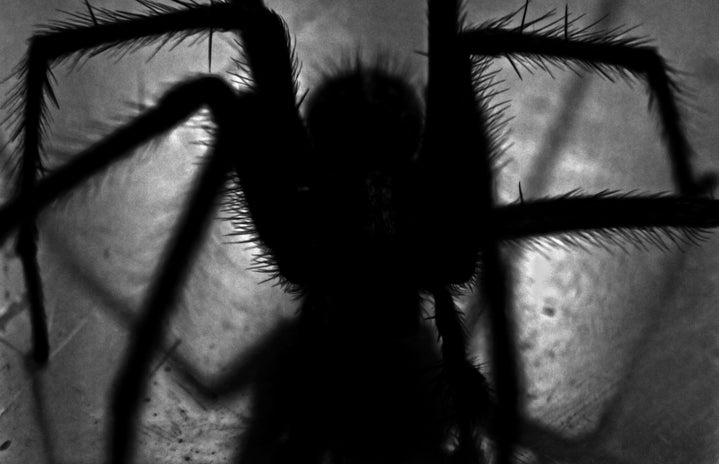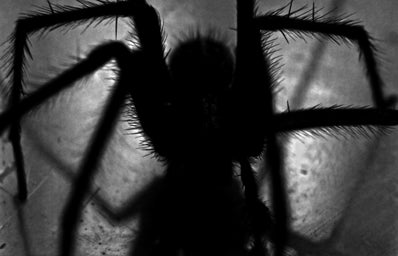Barbara Creed starts her groundbreaking book The Monstrous-Feminine by quoting Freud: “All human societies have a conception of the monstrous-feminine, of what it is about woman that is shocking, terrifying, horrific, abject.” The core of her research lies in unveiling the details of what makes a woman monstrous and the underlying fears that structure them, and discovers that the central male fear is that of being castrated, emasculated by a more powerful woman. The horror genre has, throughout its history, explored the construction of the monstrous-feminine, particularly through those characters who teeter between girlhood and womanhood. There is a notion of chaos and uncontrollability attached to female adolescence; with it comes a feeling of being untethered and set adrift. This is a list of films concerned, in one way or another, with the experience of growing up female–the horror of not knowing your own body, of losing control, of being objectified–and the ways some women struggle with the newness of these experiences through often monstrous transformations. But at the heart of these films there’s also a masked fear of what these young women can and might do, a fear of their unknowability–a fear that if, for once, they possess the power that patriarchal expectations have wielded over them, they might just destroy everything.
1. Carrie
Brian dePalma’s Carrie (1976) is, perhaps, the seminal film about the horrors of growing up. Even if you haven’t watched it, you’ve probably heard of the infamous shower scene where Carrie White (Sissy Spacek) watches with horror the coming of her first menstruation and has no idea what it means. Throughout the film, Carrie is ostracized and ridiculed by her peers for her uber-Puritan upbringing, and is forced to grapple with her overbearingly religious mother, who refuses to see her growth into adulthood as anything other than “the woman’s curse.” With the appearance of her telekinetic powers and ongoing abuse from her family and classmates, Carrie ends up transforming into a monstrous female. The film continues to incite questions about its feminist value: does her eventual downfall point to the failure of female power or is her righteous, uncontrollable anger and self-destruction the only answer to a patriarchal society? I don’t think a definite answer is possible, but whether truly feminist or not, Carrie spearheaded a movement of female-led horror that continues to permeate modern cinema.
2. Teeth
It’s been over ten years since Mitchell Lichtenstein’s Teeth (2007) premiered, and sadly, it seems its relevance is here to stay. The comedy-horror opens with Dawn O’Keefe (Jess Weixler) in a pool with her stepbrother. When he tries to molest her, his finger is torn off–our hero has vagina dentata. The cross-cultural myth of vagina dentata is said to represent the male fear of castration at the hands (or vagina) of a powerful female and anxieties about penetration. In the film, Dawn grows up in a sheltered environment of silence and censure surrounding female bodies and experiences, but she is continuously tempted to disregard her promise of purity and have sex. Ultimately, Teeth is a sharp criticism of America’s obsession with purity and its troubling treatment of sexuality, entitlement, and consent. Best of all, the film indulges in male castration fears and celebrates the possibility of a world where women actually own their bodies. If you find attempted rape triggering, though, stay away from this one!
3. Raw
Julia Ducournau’s Raw employs cannibalism as the central metaphor for coming-of-age body-horror. The film follows Justine (Garance Marillier), an innocent freshman at a veterinarian school who comes from a long line of extremist vegetarians. After a school hazing ritual where she is covered in blood, she is forced to consume animal meat. Her overly-confident and sensual sister, also at the school, does not save her–she is also consuming meat. Not long after, Justine finds herself hungering only for meat, an event that is analogous with her burgeoning sexuality. Unnatural desires signaling sexual awakening is not particularly new, but Ducournau handles trodden territory with the freshness of someone who knows the horror canon and has long since identified its deficiencies. However, at its core, Raw is about the passionate love and rivalry between the two sisters, and the ways in which they navigate and engage with their sexuality.
4. Ginger Snaps
Much like Carrie, menstrual and embodied horror lies at the heart of John Fawcett’s Ginger Snaps (2001). This time, however, Fawcett employs the myth of the werewolf to signal approaching womanhood and the traps that come with it. The film follows two edgy sisters, Ginger (Katharine Isabelle) and Brigitte (Emily Perkins), who refuse the rules of performative femininity and patriarchal objectification. But after Ginger gets her first period and is bitten by a werewolf, the sisters’ desires diverge. Ginger, confused and terrified of what’s happening to her body, becomes aggressively violent, experiments with drugs, and has sex. In discovering her newly-obtained power, she becomes the monstrous feminine, both desired and feared by those who threaten her authority.
5. Jennifer’s Body
The concept of virginity is embedded in the fabric of horror cinema, and the results are either a bloody sacrifice in a demonic ritual or the girl’s survival at the hands of a simple apotheosis: only purity deserves to survive. Karyn Kusama’s Jennifer’s Body (2009), although wrongly marketed as a male fantasy film, has a fresh take on virginity in horror. In the film, after Jennifer (Megan Fox) is mistaken for a virgin and sacrificed, she transforms into powerful succubus who thrives on the blood of teenage boys. Despite its goriness, the friendship between Jennifer and Needy (Amanda Seyfried) is the film’s catalyst. Depending on who’s watching, the film is often read as a love story between Jennifer and Needy. I tend to agree. So, if you’re OK with some subtextual queerness, dark humor, and a male-eating succubus, this one’s for you.
6. A Girl Walks Home Alone at Night
Ana Lily Amirpour describes her charming vampire flick as an “Iranian vampire spaghetti western.” Our vampire, “The Girl” (Sheila Vand), hip and rocking striped t-shirts, wanders the streets of a ghostly Iranian town sucking the blood of depraved, dangerous men. Her lonely existence is challenged by Arash (Arash Marandi), a submissive, soft man she meets walking home. The film is beautifully shot in black and white, and clearly takes its musical cues from Morricone, but it’s its exploration of love, loneliness, isolation, and gender roles that make it memorable.
7. Thelma
In Joachim Trier’s Thelma (2017), Thelma is a college freshman attempting to jumpstart her life but still held back by her over-protective religious parents. Their constant vigilance hints at their fear of losing their daughter to the “loose” morals of younger generations. When she meets Anja, a girl she is clearly attracted to, she begins to experience seizures and soon discovers a set of unexplainable supernatural powers. Albeit not a perfect film, Trier’s compounding of the supernatural, religion and sexuality is, at the very least, a fresh take on Carrie. At its best, it’s a piece that ultimately centers queerness as a space of self-reflection and healing. At its worst, it loses track of itself and wanders unnecessarily into less compelling subplots. Nevertheless, it offers a nice vacation from the often overbearing amounts of heterosexuality in horror.
8. American Mary
The Soska Twins’ American Mary is a daring rape revenge film that tackles the American desire for self-invention and determination with a twist: body modification. Mary (Katharine Isabelle) is a medical student going from job to job trying to pay for college. Desperate for money, she becomes a stripper and finds herself accidentally thrust into the world of body modification after she’s asked to save the injured owner of the club. She’s later assaulted by one of her professors and spends the rest of the film torturing him. From plastic surgery to rape, the film attempts to have Mary and its other female characters reclaim their lost bodily autonomy. It’s indulgent and a little too gory for my taste at times, but like other critics have pointed out, it offers a refreshing take on the trope of the final girl and centers the unsolvable competition between natural and artificial beauty.
I remember the first time I watched Park Chan-wook’s Oldboy. I was probably too young to have watched it, and its gory violence and psychological complexity left a mark not many other films have left. Consequently, I’ve watched all of his films, hoping to catch another grain of whatever it was that made Oldboy so memorable to me. Stoker (2013) gave me that. The film follows India Stoker’s (Mia Wasikowska) transformation into a full-fledged serial killer upon meeting her similarly deranged uncle Charlie (Matthew Goode). The film’s gaze is undeniably male at times, and it often undermines India’s journey, but, for once, it gives us a well-developed female serial killer discovering and reveling in her lawless desires. After so many unbearably indistinguishable male psychopaths fashioned after Patrick Bateman, I think that’s something to celebrate.
10. The Witch
With The Witch (2015), first-time writer and director Robert Eggers scavenges through history to create a deeply moving and terrifying portrayal of a Puritan family 17th century New England. After being banished from a church, the patriarch relocates his family to a remote land that borders a forest. As their crops fail and one of their children disappears, fear and paranoia mount, and the family begins to suspect the oldest child, Thomasin (Anja Taylor-Joy), to have cursed them with witchcraft. But Thomasin’s developing body, in the border between girlhood and womanhood, is equally dangerous. Her brother Caleb stares lustfully at her breasts and eventually falls prey to his lustful desires. Ultimately, The Witch is an examination of the fear of female power and a compelling folktale of the limited possibilities of empowerment in a patriarchal society.


